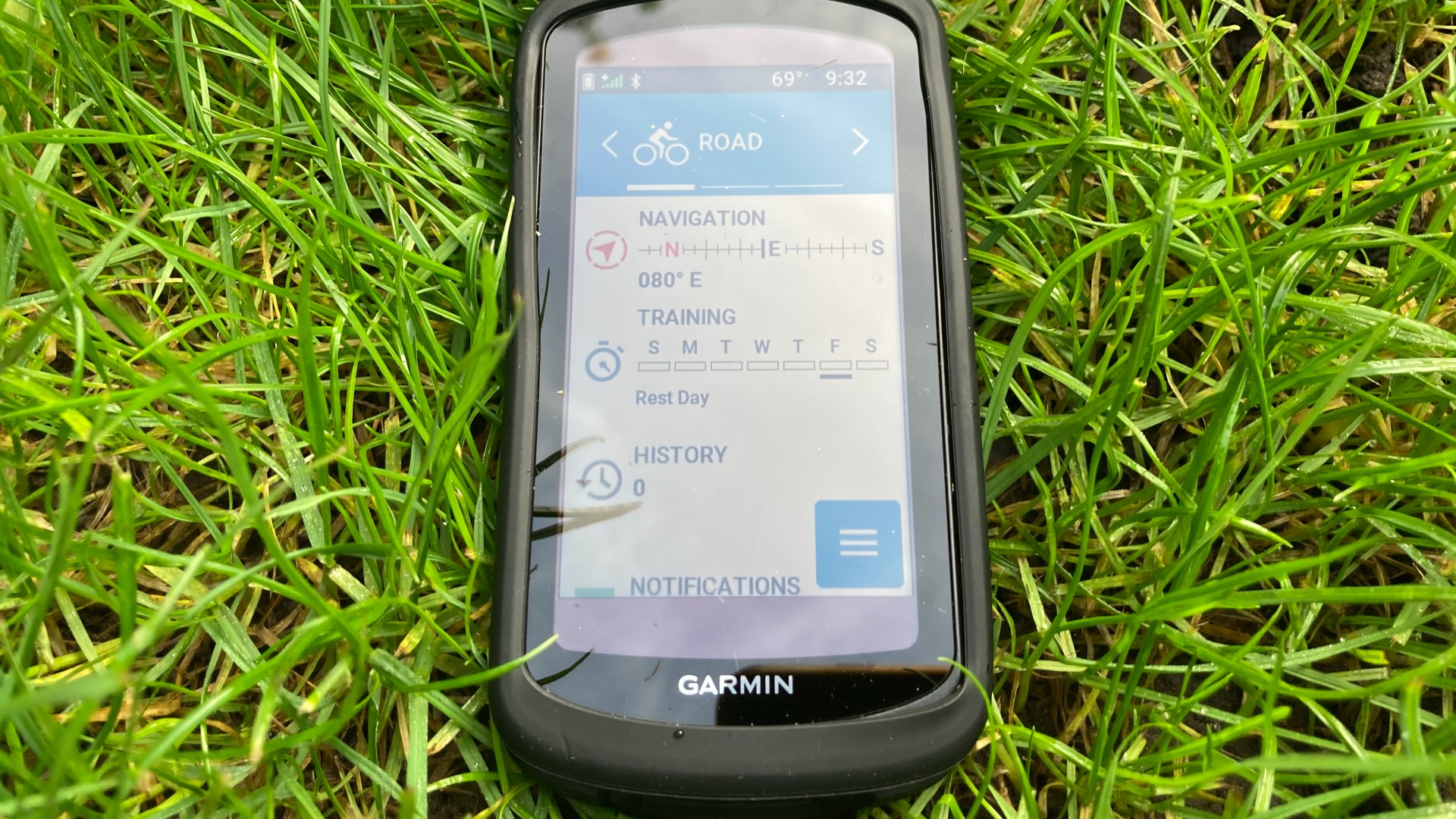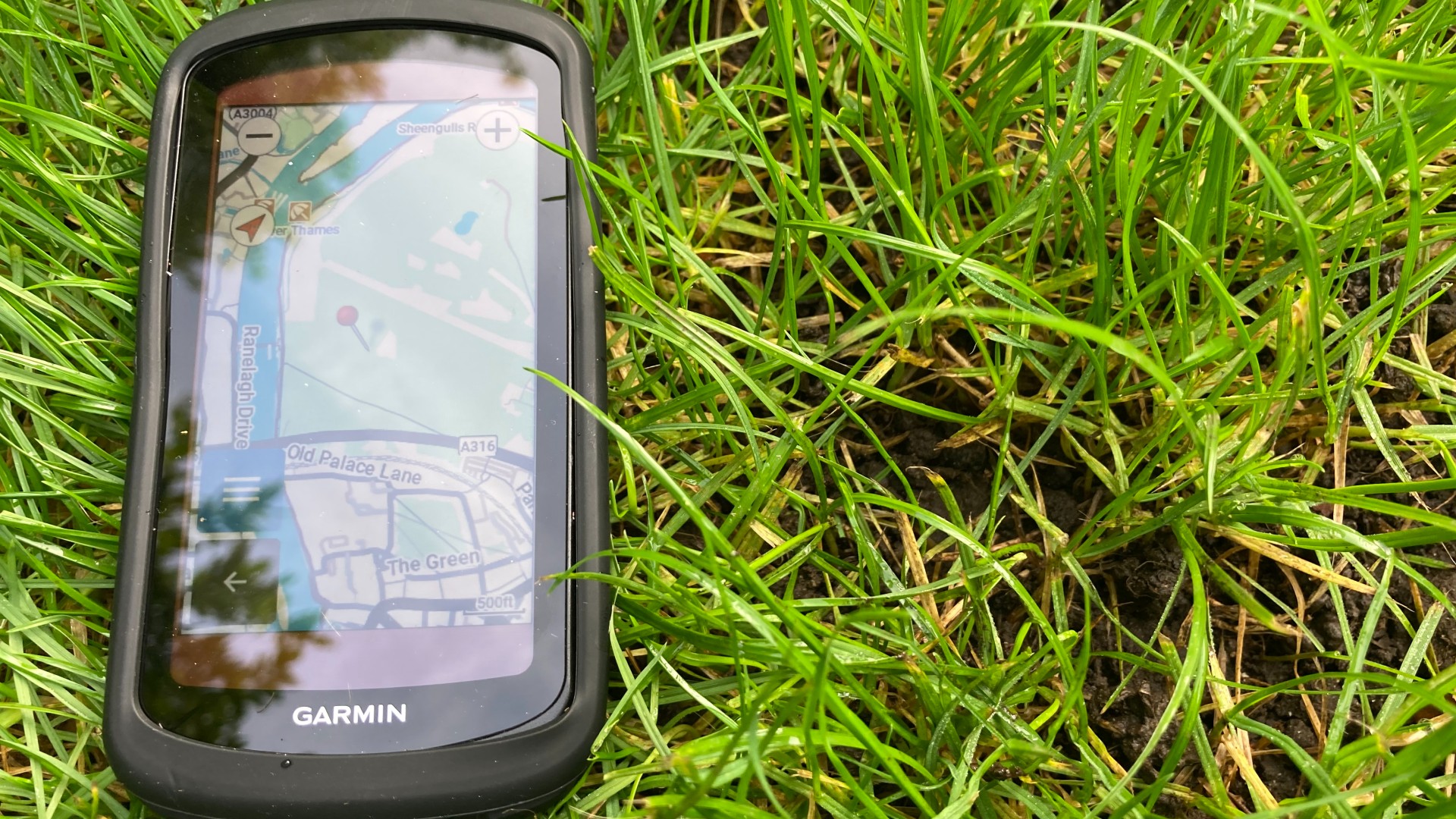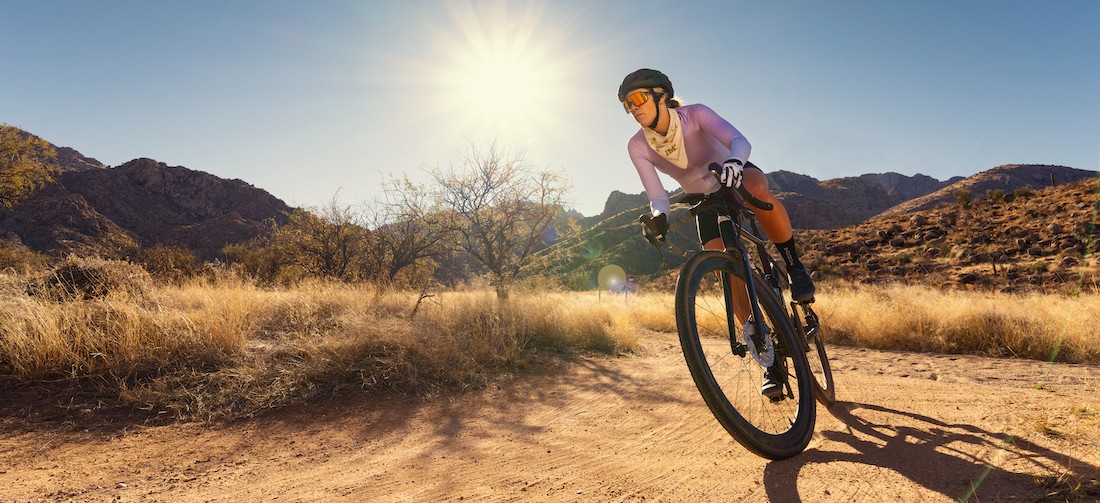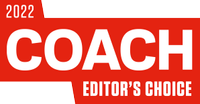Our Verdict
The array of features, combined with the increase in battery life provided by the solar charging, makes the Edge 1040 Solar a delightful rarity: a product that represents a genuine step change rather than an incremental improvement. However, this big leap forward comes at a hefty price.
For
- Range of features
- Impressive battery life
- Improved user interface
- Expansive screen size
Against
- Expensive
- May be too large for some riders
You can trust Coach
Garmin’s Edge bike computers have been the gold standard for years now, de rigueur for pros and amateurs alike. Only a few rivals have been able to come close to the performance levels – and none that can match the Garmin’s ubiquity. With that in mind, we were surprised to find that the elite model among the best GPS bike computers can still get better. Although, with that improvement, it also gets pricier.
In the case of the Garmin 1040, the big change is that it now has solar charging through its screen glass. This promises a doubling of its 90-hour battery life during passive use and a sizeable 10-hour increase during high-demand use. In other words, you can pair your HRM and power meter, use the GPS and run the 1040 Solar’s myriad analytical features simultaneously without wiping out the battery.
Back when the Garmin was essentially just a GPS and repeater for your HRM data, such an enhancement would have been irrelevant, but those models with their perishable rubber joysticks and dim screens are long gone. The 1040 is a data-and-processing heavy beast. It can anticipate your stamina reserves based on previous ride data, track your existing ride data and historical data to monitor the effectiveness of your training load, alert other riders if you crash and more. About the only things it won’t do are shout “clear left” at a junction and buy you cake at the café stop.
Garmin Edge 1040 Solar: Price And Availability
The Garmin Edge 1040 Solar is available now and costs $749.99 in the US and £629.99 in the UK. The basic Edge 1040 costs $599.99/£519.99 and is available packaged as a bundle, with mounts, a HRM-Dual monitor, USB cable, speed and cadence sensor, and tether for $699.99/£599.99.
The Set-Up

Any sort of consistently gathered, reliable data is an invaluable aid to improving your performance, and you can’t fault the Edge 1040 Solar for the amount of data it collects. The more devices you pair it with and the more rides that accumulate in its memory, the more useful it becomes, even if you’re the sort to take its interpretations with a pinch of salt.
From a personal perspective, data has always been the silver bullet that kills junk miles. It’s what allows a rider who can only train for a few hours a week to compete with a rider who can train a few hours a day. Data lets you find out what’s working and what isn’t, and data tells you where your strengths and weaknesses are. After several weeks with the 1040 Solar I’ve still not run out of things for it to measure and interpret. Oh, and there’s also the easily forgotten benefit that it stops you getting lost.
Immense feature list aside, the Edge 1040 is a nice piece of kit. Straight from the box it feels solid and looks stylish. The old rubber-nipple joystick has long since been replaced with a responsive touchscreen. In the box is a good selection of accessories, including a protective rubber case, a verging-on-the-absurd number of rubber bands and widgets to ensure a perfect fit, and two mounts – one for attaching the 1040 Solar to your handlebars, and the other for mounting it forward of the stem. Given how utterly “pro” the latter looks, it’s hard to imagine anyone using the former, though it’s nice to have the option.
Setting up is straightforward if you have a smartphone. The Garmin Connect app will sync via Bluetooth and transfer all your settings. It neglects to mention that you’ll need app permissions turned on in the privacy menu of your mobile phone – simply switching on Bluetooth and opening the app won’t do the job.
Initial set-up allows you to choose from a variety of cycling types, including road, mountain, gravel touring and indoor, among others. You can also add power, heart rate or cadence sensors at this stage. The Garmin Connect app then doubles as a tutorial for the Edge Solar. That I was able to easily synchronise an iPhone and a Garmin Vivoactive was unsurprising, but I was particularly pleased to discover that a selection of obscure third-party peripherals from my “bits box” also connected easily, from brand-name power meters all the way down to the cheapest heart-strap monitor Amazon can supply. Like a happy drunk, the Garmin appears willing to talk to anything.
The Experience
The user interface is simple to understand and navigate, but also customisable, allowing you to choose what metrics are displayed and where. Its default is to give you your most recent route and a compass bearing, followed by what Garmin calls “glances” – quick data on weather, training schedule, recent exercise history and any notifications pushed from your phone.
Helpful extras include a stamina guide, which makes suggestions on how to handle certain routes efficiently. It can also display data for climbs on routes that you’ve added, so you get a colour-coded profile of your ascents that will appeal to anyone with Rule 5 instincts.
The screen itself is sharp and handles direct light well, and didn’t white out in blazing sunshine. Even in typical wet British conditions, I discovered that the screen is as responsive to gloved fingertips as bare ones, and remains responsive even in the rain. Having once had a big-name bike computer lobotomised by overhead power cables on a train, I was equally pleased to find that lightning storms and public transport do the 1040 Solar no harm either.

Is The Garmin Edge 1040 Worth It?
The 1040 Solar’s biggest selling point is its battery life, something that will presumably give it cross-over appeal into some of cycling’s greybeard long-distance communities. But, in all honesty, it has something for everybody. It’s probably the most feature-packed head unit on the market, trumping any rivals within the Garmin range, and even outdoing excellent rivals from Hammerhead.
The size of the Edge 1040 might be an issue for some users: it’s fractionally bigger than recent models, feeling like a throwback to the 700 series, albeit with a larger 3.5in (89mm) screen in place of the old physical controls. Its size is another reason to prefer the supplied out-front mount, as the 1040 Solar will take up a lot of handlebar space. Whether you find its size problematic will be down to the sort of riding you do. My first use of the 1040 Solar was on unfamiliar roads in France and the sizeable navigation display was reassuring as I ventured deeper into landscapes best suited to a Gallic Deliverance. If you’ve invested heavily in aero kit, however, the size of the 1040 Solar will rankle.
As will the price, no doubt. Even if you shop around it’s nearly a third again as much as its nearest rivals from Hammerhead and Wahoo. Still, its range of features is ahead of anything else’s, and the solar charging is a godsend. Anyone who has turned off features on a long ride in order to save battery life will appreciate the fact that the 1040 Solar does away with that “riding blind” feeling on long days. It’s a great product with features that are genuinely useful, so naturally I highly recommend it. I also highly recommend waiting till it’s in the sales.

Jamie Ewbank is journalist with a lifelong love of cycling, both as a sport and a pastime. He has tackled a few mountains, ridden many century rides, and has unwillingly swallowed numerous angry wasps while descending at speed, so he’s seen the best and worst that cycling has to offer.
Amid a career that has tackled a variety of subjects he has written about cycling for The Wall Street Journal, Cycling Weekly, Cycling Plus, Cycling Active, Bike Radar and The Guardian.


